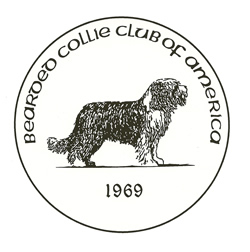(from the June 2016 AKC Gazette)
A saying in the obedience world tells us “Before you can teach a dog anything, the one thing you have to know… is more than the dog.” No problem, I thought… Then I started Declan in Nosework classes and now I’m finding he has a lot more sense about scents than I’ll ever have. It’s one thing to read about, or even watch, trained dogs use their noses to detect explosives, drugs, termites, pipeline leaks and dozens of other things. But it’s quite another to watch your own dog confidently indicate the location of a scent. (Especially when he’s just a five-month-old puppy.)
Nosework is both simple and complicated. The dog must just locate a specific scent and let the owner know where it is. That’s the simple part. For competitive nosework, the dog learns five scents– birch, anise, clove, myrrh, vetiver – in addition to the owner’s scent. Searches are broken down into Container, Interior, Vehicle and Exterior. These search areas are pretty much as they sound. Container searches usually use a ‘hide’ in a conglomeration of boxes. Interior may be a room or a portion of a room where the scent is hidden while Exterior is an outdoor area. Vehicle is self-explanatory. There are titles to be won in each of the search elements, beginning with Novice and working through Advanced, Superior, Master and Elite. That’s the more complicated part.
It helps to know a little about the science of scent as well as how your Beardie’s olfactory equipment works. A canine’s scenting ability is believed to be the most highly developed of all the senses. In addition, dogs can identify a single scent from a whole melange of other odors. You may inhale a smell from the kitchen and think “spaghetti sauce” while your dog sniffs and thinks “hmm, tomatoes, onions, garlic, mushrooms, green peppers…..” One of the first things dogs and owners must do is decide on the dog’s signal that he has found the scent. It may be anything as simple as a sit or a down. A Toy Poodle in our class does a happy dance on her hind legs to announce her ‘find.’ In competition, the handler may talk to the dog during a search and reward him (treat or toy) after a successful ‘alert.’ What’s not to like?
Nosework has turned out to be as much – or more– of a learning experience for me than for my Beardie. I’ve learned to ‘read’ Declan’s moves and to know when he’s hard at work on a scent. And I’ve learned the truth of something a tracking friend told me many years ago. “Trust your dog.”
Some time ago, our instructor had placed out a container search — a straight row of a dozen identical cardboard boxes. There was a scent stick (a Q-tip dipped in birch oil) in one of them and Declan was the first to attempt to locate it. He sniffed his way methodically down the line and suddenly dropped into a down beside the fourth box, his signal he had found the scent. “That’s not it, ” said the instructor. I relayed the message to Declan and once again told him “Go find it.” Instead, he gave me a disgusted look and then smacked his furry white paw down hard on Box 4. “That’s not it,” I told him again and instructed him to keep searching. In response, he stuck his nose under the box and flipped it in the air. The message was clear. Declan was sure he’d found the scent and he considered me to be two bottles short of a six-pack for not believing him. Finally he was convinced to move on, though he wasn’t happy about it. He checked out the following boxes and plopped down beside the one the instructor deemed correct, accepting his praise and reward without his usual enthusiasm. But his actions made the instructor curious why Declan had been so insistent about Box 4. Picking it up and opening it, she found a scent stick inside that had been left there for two weeks when the box had been used in another training exercise. Trust your dog. You bet!
– alice bixler, Bearded Collie Club of America, bcca.us




